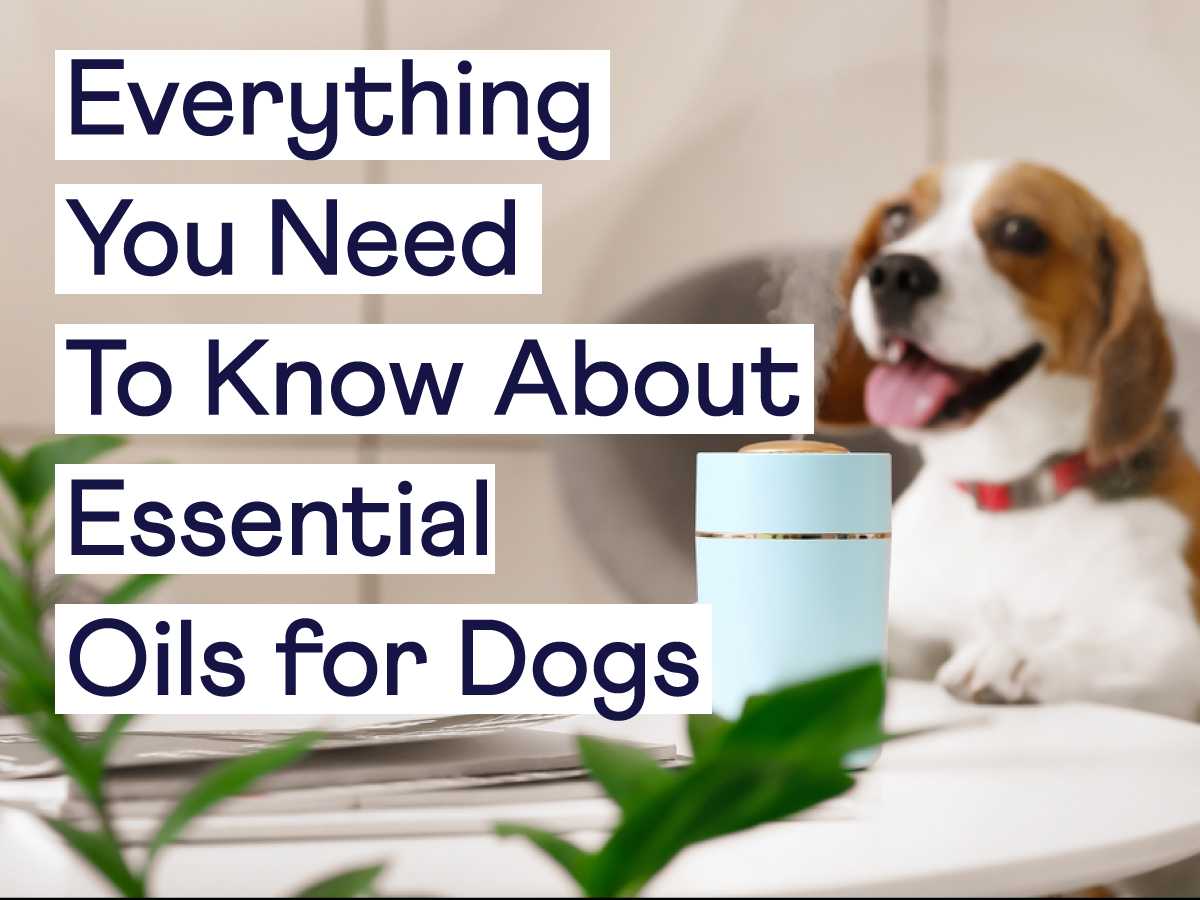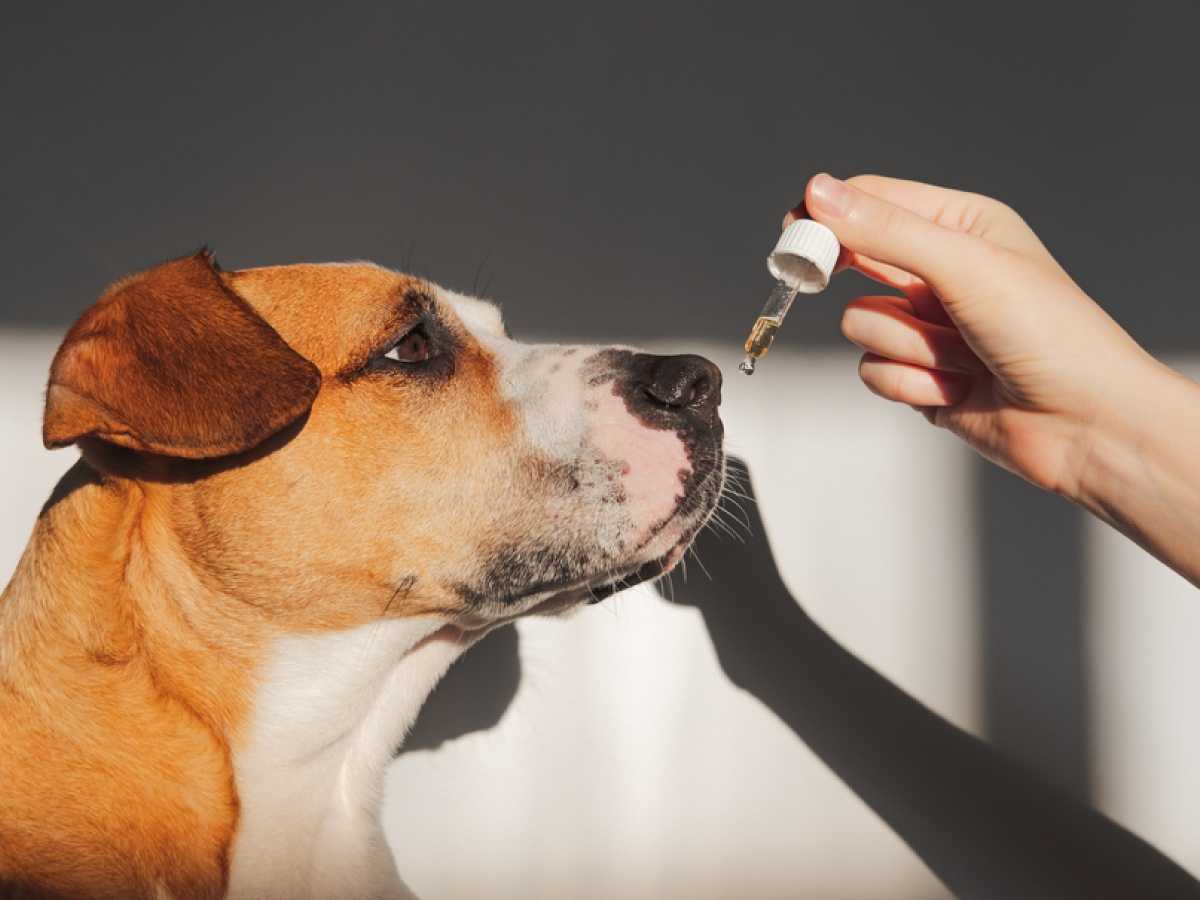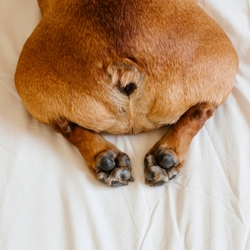
Everything You Need To Know About Essential Oils for Dogs
Considering essential oils for dogs? We're here to break down everything you need to know about how to safely and effective use essential oils with your dog.
More and more people are getting to know the benefits of essential oils. And, just like sneaking your dog a bite of your dinner, many of us want to know if we can share those benefits with our precious pets.
Here at Finn, we work hard to empower all pet parents to give their pets everything they need to live a happy and long life. Today, we’ll explore how to use essential oils for dogs safely and what you should expect when using them.
What Exactly Are Essential Oils?
You’ve probably seen essential oils at the store or on social media, but what exactly are they?
Essential oils are a highly concentrated form of plant extract. Each plant chosen to make essential oils has aromatic compounds, which is the secret behind their unique benefits. The original plant is processed through either distillation or cold pressing to extract those compounds until only its core “essence” remains. That essence is then combined with a carrier oil to make them the ready-to-use essential oils you can purchase all across the United States.
These oils are available for purchase in many stores and on the internet. It’s important to note that no governing body maintains quality standards for essential oils, so it’s vital to do your research and stick with companies that uphold high standards. Anything can be called and sold as an essential oil, ultimately.
The Science Behind Essential Oils
Although essential oils are not new, the research into them is. Ironically, while most studies start on animals and progress to humans, the look into the science behind essential oils has mostly only been done on human subjects.
However, many veterinarians that specialize in alternative treatments (like acupuncture and therapeutic massage) have been utilizing essential oils for dogs through aromatherapy practices for years. While the science is still in process, Merck Veterinary Manual considers essential oils mostly safe as long as you know how to use them.
Many of the available studies were funded by companies looking to sell their essential oil products, so use caution when deciding which to trust.
Why Do People Turn To Essential Oils for Their Dogs?
More and more people are looking for alternative ways to support the health of both themselves and their pets. But why is this trend happening, and is there any truth behind it?
As we said, the science surrounding essential oils (especially when used for our canine friends) is still in process. But medicine, in general, has seen a significant push away from using the more traditional methods of treatment and care. Unfortunately, anecdotal evidence and misinformation are two main driving forces behind the push towards non-traditional healing approaches.
That’s not to say that there aren’t benefits to using essential oils for dogs. When combined with traditional veterinary care and recommended prescription medications, many alternative therapies can successfully supplement your pet’s care.
Are There Any Risks Associated With Using Essential Oils for Dogs?
Just because a product has natural origins doesn’t make it necessarily safe for your dog. Because your dog is your best friend, you don’t want to accidentally do anything that can harm them in an attempt to help.
Remember, essential oils are the concentrated form of the plant. If the plant itself is considered dangerous or toxic to dogs (you can see a partial list on the ASPCA Animal Poison Control website), the essential oil version of that plant can be even more so.
That means the essential oils safe for dogs are similar to the plants they can safely consume — if you would panic if your dog ate it, you don’t want to use it as an alternative treatment.
In addition to the potential for toxicity, essential oils can also be irritating to your dog’s skin. If you want to use the oils to help soothe a skin condition, using the wrong essential oil (or too high of a concentration) can be counterproductive.
How To Use Essential Oils for Dogs
Now that you are aware of the potential risk, how can you safely utilize essential oils for your dog?
The safest way to do that is by using them for aromatherapy. Keep in mind what might smell amazing to you can quickly become overwhelming for your dog. Dogs have up to five times the amount of olfactory receptors in their noses as we do, so you can often get by with just a single drop or two and get the same results.
Start with the smallest amount of essential oil possible, and then build up if you do not see the desired results.
Try making essential oils into a mist. Mix a few drops of oil into a spray bottle, then fill it with distilled water to dull the intense fragrance. Then, spray minimally onto the areas needed (most frequently, your dog’s bed or other places they spend a lot of time). You don’t want to soak the area, as they will be able to smell it even though you may not.
If you want to avoid the essential oils making direct contact with your dog, you can also try a water diffuser. Diffusers sit on a flat surface and come in a lot of different styles to match the decor of your home. Diffusers put a constant, microscopic mist of essential oil into the air so that you can extend their benefits for more extended periods.
All you need to do is add a drop or two of essential oils and walk away. However, you should only use diffusers after you’ve introduced your dog to the essential oil in question, as the scent can be overwhelming if there’s too much in the air too quickly.
One last important note with safe essential oil usage is that you should never use them directly on your pet’s skin (without your veterinarian’s recommendation). Pure essential oil is far too concentrated to be beneficial and will likely cause skin irritation and discomfort.
Dog-Safe Essential Oils
Which essential oils are safe for dogs? While it’s best to check with your veterinarian before starting any new medications (and yes, essential oils are considered an over-the-counter supplement), having at least some idea of which options are “safe” is a great place to start.
Is Chamomile Essential Oil Safe for Dogs?
Chamomile essential oil has been the focus of at least some research, mainly into how it can help promote a sense of calm and relaxation in your dog. One study showed that chamomile essential oil helped shelter dogs to spend more time resting and less time walking around. Dogs exposed to the scent also spent less time vocalizing other dogs in the same situation.
Is Ginger Essential Oil Safe for Dogs?
Ginger essential oil is not just safe for dogs; it has also been studied for its potential benefits in supporting immunity. There is also some anecdotal evidence that the scent of ginger can help relieve the feeling of an upset stomach. Think of how a nice, warm cup of ginger tea makes you feel. Wouldn’t you like to help your dog feel the same way?
Is Orange Essential Oil Safe for Dogs?
Of the many essential oils on the market, orange essential oil is one of the safest. However, that doesn’t mean that your dog won’t be sensitive to the oil (or citrus in general, which is common).
Certain breeds may be more at risk for developing reactions to orange essential oil, though, so it should still be used with caution and not applied directly to your dog’s skin.
Orange essential oil may be able to help your pet feel happier, calmer, and more relaxed. Orange (and citrus in general) also energizes both humans and dogs, so keep this in mind when first starting.
Is Frankincense Essential Oil Safe for Dogs?
One final essential oil that we’d like to feature is frankincense. Frankincense is one of the less potent options, making it naturally safer for treating your dog. Many believe it can help reduce feelings of gastrointestinal discomfort and even help to kill off bacteria. When sprayed into your pet’s bed, it may help them feel better while also keeping the germs away.
Essential Oils To Avoid
Many essential oils are safe to use in dogs, but there are also a few that you should avoid. Certain essential oils bad for dogs can have severe adverse reactions, including being potentially fatal.
This is not a comprehensive list; you should always make sure to do your research and talk to your veterinarian before starting anything new.
Is Eucalyptus Oil Safe for Dogs?
Eucalyptus oil is toxic to dogs, as is the eucalyptus plant itself. Eucalyptol, a specific component present in eucalyptus, is known to cause liver and kidney disease when ingested or absorbed by dogs (and cats). While eucalyptus oil may help humans, you should keep it away from your furry friends.
Signs that your dog may be experiencing eucalyptus oil toxicity include confusion, excessive drooling, loss of appetite, rapid breathing, and seizures. Essential oil toxicity is an emergency, and you should treat it as such.
Is Peppermint Oil Safe for Dogs?
Peppermint essential oil may smell great, but using it with your dog can be a dangerous proposition. Although some people claim it can help your dog with discomfort, the oil is considered toxic and should be avoided.
Symptoms of peppermint oil toxicity include lethargy, vomiting, and diarrhea, and need to be treated immediately by a veterinarian. If left untreated, peppermint oil toxicity can lead to liver failure or even be fatal.
Is Tea Tree Oil Safe for Dogs?
Tea tree oil (also seen as melaleuca oil) is potentially one of the most dangerous when it comes to essential oils for dogs.
Although it is touted as a natural means of supporting healthy skin, as few as seven drops of tea tree oil have caused severe poisoning in dogs — any more than that has the potential to be fatal. It’s best to keep it out of the house entirely to avoid issues.
Symptoms of tea tree oil toxicity include depression, trouble walking (ataxia), rear leg paralysis, low body temperature (hypothermia), skin irritation, and vomiting. Contact your veterinarian right away if you suspect your dog may have gotten into tea tree oil.
Why You Should Avoid Essential Oils as a Flea and Tick Medication Alternative
Essential oils are often thought to function as a natural alternative to treating your pet with flea and tick medication. While this may be true for some on an anecdotal level (there are no scientific studies that prove this theory), there is no replacement for prescription preventative treatment.
Although it can be tempting to skip the expense of paying for veterinary-grade flea and tick medication, it is well worth the cost. Flea bites can lead to uncomfortable and potentially dangerous medical conditions like allergic dermatitis or skin infections, and fleas can become a massive problem in your home seemingly overnight.
Tick bites are equally problematic, leading to long-lasting conditions like Lyme’s disease, Rocky Mountain spotted fever, ehrlichiosis, and canine anaplasmosis (dog tick fever).
Flea and tick medications also protect against mosquito bites, which can transmit a devastating parasite known as heartworm.
Protecting your dog from these conditions is of the utmost priority, and essential oils just don’t do nearly as much of a thorough job. They can also cause potentially toxic reactions.
It’s best to stick with the medication your veterinarian recommends to protect your precious pet as best as possible.
How To Store Your Essential Oils
You must store your essential oils properly for more reasons than just keeping them as potent as possible.
Even though you don’t see essential oils as tasty, dogs have different tastes and motivations. If you store them too close to the ground or anywhere that your dog may be able to reach, there is always a possibility that your dog may decide to eat them.
At best, your dog can experience some gastrointestinal upset (like nausea, vomiting, or diarrhea). At worst, it can become a life-threatening situation. Make sure to seek emergency medical care if your dog does get into any essential oil.
Other Ways To Keep Your Dog Happy and Healthy
From chihuahuas to great danes, focusing on health and wellness is vital to keeping your pet around as long as possible. There are a few specific components involved in well-rounded dog care, which should also start with a visit to your veterinarian for specific recommendations.
Dog food is your pet’s primary form of calories and nutrients, and each dog has unique dietary needs based on its age, breed, and even health. Also, while most dogs get everything they need nutritionally from their food, supplementation can be beneficial in certain circumstances, especially when aiming to provide extra support to a specific system like the coat or immune system.
You should also make sure to get your dog plenty of exercise. Exercise is essential for keeping your dog physically and mentally healthy from puppyhood through adulthood.
When your dog is a small puppy, exercise can help keep them stimulated enough to prevent destructive behaviors things and allow them to sleep better at night. As adults, it can help reduce the likelihood of developing behavioral problems and keep them at a healthy weight. And as elderly dogs, exercise gives them something to look forward to and keeps them mentally engaged.
And finally, while it may seem unrelated, play is another essential component of your pet’s life. Play may look like all fun and games, but it has a vital role in your dog’s development and behavioral health. It is also an excellent opportunity to help you bond with your dog to continue to have the close relationship you want.
In Summary
When you know how to use essential oils for dogs in a safe way, it can give you another effective tool to help make their life as happy and healthy as possible. Remember not to allow your dog to ingest them, store them safely, and choose only essential oils that are known to be safe.
Sources:
Herbal Medicine - Management and Nutrition | Merck Veterinary Manual
Lavender and Chamomile Essential Oils May Relax Shelter Dogs | Tufts
Use of Essential Oils in Veterinary Medicine to Combat Bacterial and Fungal Infections | PubMed









Comments: